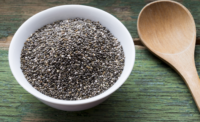When discussing the healthfulness of your company’s products, how often do you find yourself starting sentences with “Why can’t we just say?...” As a researcher, I spend much of my time analyzing the contribution of grains to the American diet, working to clarify misconceptions around the health merits of grains.
Grain foods are often blamed for the nutritional pitfalls of the company they keep—certain sandwich meats, many condiments, sugary frostings and other items the 2015 Dietary Guidelines for Americans recommend limiting. The grains industry as a whole has recently faced a wave of criticism about its products, with public perception constantly villainizing the loaf and ignoring the health benefits of grain products.
The biggest challenge with nutrition claims and research is that quality science takes time. Trends and diet fads are often ahead of science, with media and consumers making claims that often lack credible scientific support. While consumers are quick to change the conversation and jump on the latest health craze, food manufacturers struggle to match the pace of ever-changing consumer demands and lack the ability to activate research studies, which often take years to fund, conduct and legitimize, to combat the negative reputations of specific products.
Partnering with the Grain Foods Foundation, we’ve devoted significant time over the past several years to examining data and start to create science-based findings to support industry claims. Utilizing data from the National Health and Nutrition Examination Survey (NHANES)—a rich data set collected by the U.S. government every two years—we analyzed the dietary nutrients provided by grain food dietary patterns, and observed a better diet quality for adults and children who consume several grain food patterns in comparison to adults and children who tend to avoid grain foods. This serves as an essential first step in debunking myths and claims about the health benefits of the carb-free and paleo diet trends. As a result of this observational data analysis, we’ve uncovered several key points that can help in the development and marketing of your grain-based products.
Our most recent paper, published this summer in Food and Nutrition Sciences, now allows us to say the following:
- Adults who get most of their grains from pasta, cooked cereals and rice weigh nearly seven pounds less and on average have a one-inch smaller waist circumference than those who don’t regularly eat grains
- People who eat certain grains consume significantly less saturated fat and added sugars than people who eat virtually no grains
While this work is extremely beneficial in helping the industry combat some of the stigma surrounding grain products, it is just the beginning. This is a foundation, and we must continue our work to ensure that more specific and negative claims against the industry are refuted with scientific research.
But in the meantime, what can we say? Based on our research to date, we can now say:
- Grains are one of the primary sources of fiber in the diet, providing comparable fiber to fruits and vegetables
- Grain foods are on par with milk and dairy foods in terms of nutrient density
- People who consumed certain grain food patterns had greater intake of fiber, calcium, magnesium and vitamin D than people who consumed no main grain foods
- Adults who consumed a grain pattern predominantly consisting of yeast breads and rolls had lower total sugar intake when compared to those adults who eat almost no grains
- Grains provide vital nutrients, specifically iron and folate, for women of childbearing age
It is our responsibility as an industry to understand the merits and shortfalls of our products, improve our products to help consumers meet shortfall nutrient gaps, educate consumers and healthcare professionals on the potential unintended nutrient consequences that may arise if grains are eliminated from the diet, and ensure that we’re accurately combating consumer claims that remain unfounded.




